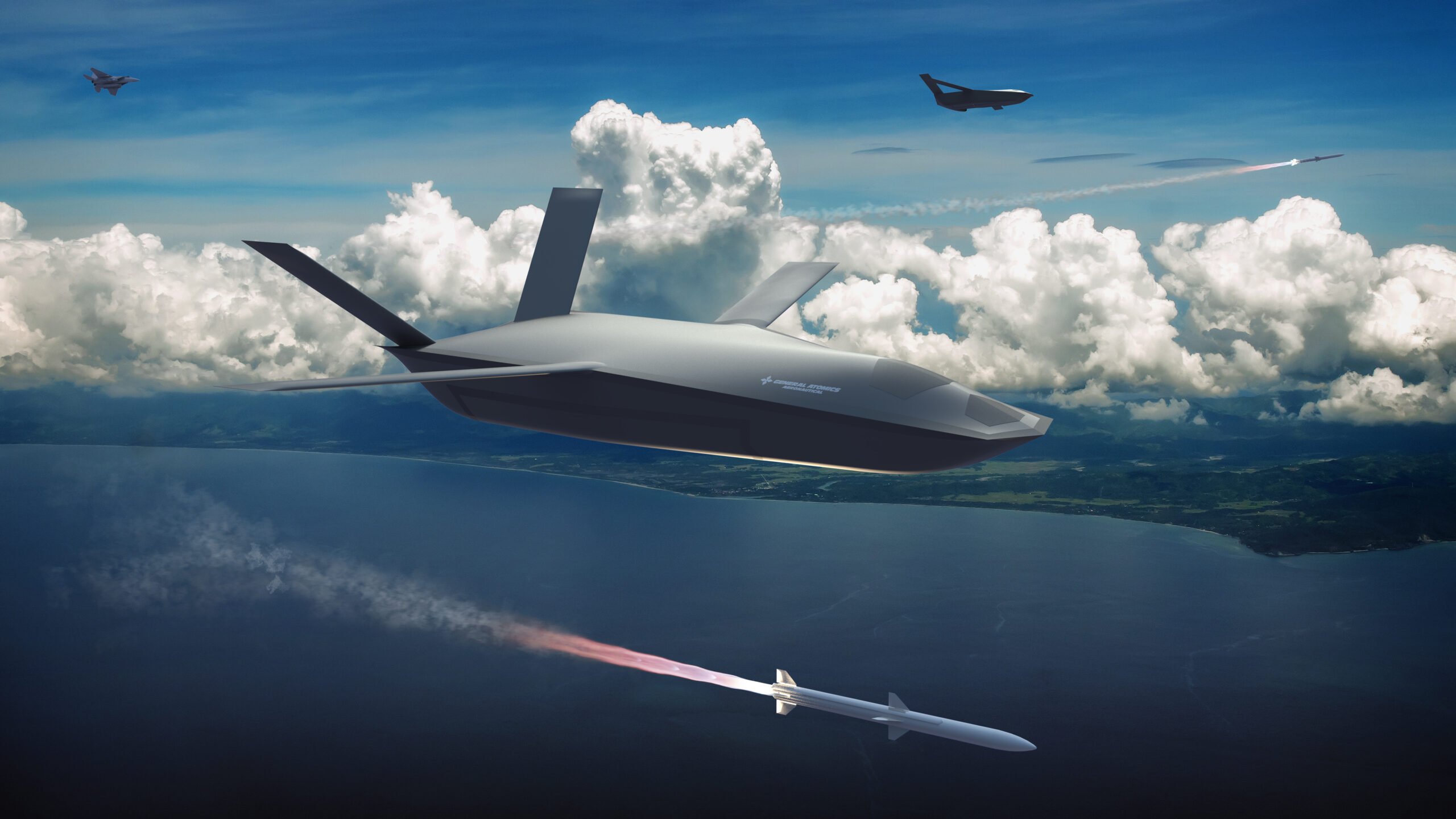
An artist’s rendering of General Atomics’ LongShot design. Source: General Atomics.
AIR WARFARE SYMPOSIUM — General Atomics’ pitch for the Defense Advanced Research Project Agency’s LongShot program — a three-phased effort to build a turducken-like unmanned aircraft system (UAS) dropped from a bomber or fighter that can launch missiles of its own — is still on the menu for DARPA, following its selection by the agency to move into the program’s second phase, the company told Breaking Defense.
The unmanned systems DARPA envisions will carry air-to-air missiles and be deployed at standoff ranges, allowing aircraft to hang back as the drone closes in to neutralize airborne targets with its own payload. General Atomics was picked alongside Northrop Grumman and Lockheed Martin to provide preliminary designs for LongShot’s first phase in February 2021, though DARPA has not yet disclosed if the other two contractors also are moving forward.
“After a successful Preliminary Design Review (PDR) in February 2022 at the end of Phase 1, [General Atomics] was selected by DARPA to continue into Phase 2 in March 2022,” General Atomics spokesman C. Mark Brinkley said, adding that a critical design review that will mark the end of phase 2 is planned for “early 2023.”
Brinkley said the company is also currently working on a phase 3 proposal.
Breaking Defense previously reported DARPA plans to push down to one vendor in the program’s third phase, which will begin work on fabricating a prototype that DARPA wants to fly by fiscal 2024. According to the agency’s $36 million FY23 funding request, the program plans to start building the prototype this fiscal year.
General Atomics “is committed to the successful flight demonstration of the LongShot air vehicle,” Brinkley said.
DARPA is targeting both the Navy and the Air Force as potential partners to transition the effort into an acquisition program.
The Air Force has been particularly interested in pairing drones with aircraft since the launch of its Skyborg program in 2019, a concept the service also intends to apply to its secretive Next Generation Air Dominance fighter using drones known as collaborative combat aircraft (CCAs). The CCAs are planned to fill roles like carrying additional missiles, providing extra sensor coverage or even taking a hit from an enemy in the place of a piloted aircraft.
RELATED: Inside the special F-16 the Air Force is using to test out AI
Air Force officials such as Chief of Staff Gen. CQ Brown have indicated the service has recently unlocked greater capability from uncrewed systems, emphasizing that future budgets will demonstrate commitment to CCAs that officials hope to link with fifth-gen fighters like the F-35 as well.
A competition for a CCA program, according to service secretary Frank Kendall, could launch as soon as FY24.






















